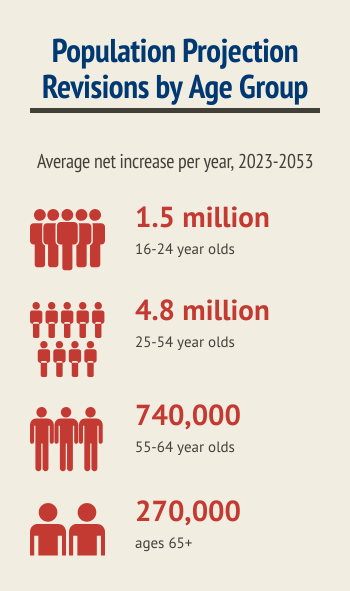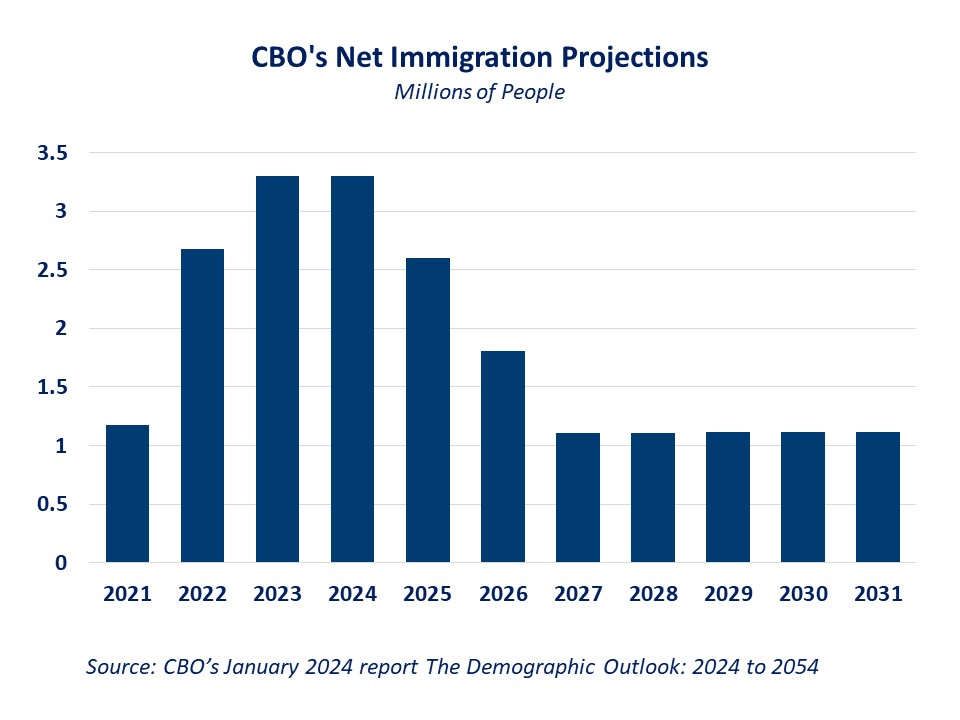The Congressional Budget Office (CBO) released new 30-year population growth projections that include substantial upward revisions to the net immigration rates and slightly lower projected rates of mortality from COVID-19. As a result, the revised population estimates now include an additional 8.9 million people in 2053, a 2.4% increase from its previous forecast. A faster growing population will undoubtedly increase demand for housing (multifamily and single-family, for-sale, and for-rent), creating added pressure on the persistently underbuilt housing market.
The largest revisions are concentrated in the population of prime working ages 25 to 54, the core of the US labor force, that is now projected to be larger by 4.8 million workers per year, on average, over the next 30 years. The population aged 16 to 24 is increased by 1.5 million people per year on average. The older population growth has undergone smaller revisions: the population ages 55 to 64 and ages 65 and older is augmented by an average of 740,000 people and 270,000 people per year, respectively.

The CBO population growth projections are influenced by birth, death, and net immigration rates. The agency attributed most of the forecast gains in the labor force population to higher rates of net immigration over the next three years. After immigration levels declined in the early years of the pandemic, CBO estimates that net immigration to the United States increased sharply in recent years, reaching 2.6 million in 2022 and 3.3 million in 2023 . In comparison, net immigration from 2010 to 2019 was averaging 900,000 people per year. The agency boosted the projected number of people immigrating to the United States to 3.3 million in 2024, 2.6 million in 2025, and 1.8 million in 2026. After 2026, net immigration is expected to return to historical levels, averaging 1.1 million per year over the 2027–2054 period.

The lower projected rates of mortality from COVID-19 also contributed to the upward revisions but on a smaller scale, and mostly for the population in the older age groups. Partially offsetting the positive gains in population is a reduction in the projected total fertility rate, from 1.75 to 1.70 births per woman.
Despite the substantial positive revisions, US population growth generally slows over the next 30 years. As population ages with deaths exceeding births, net immigration is expected to bring additional workers to sustain the aging population. According to the CBO forecast, by 2040, net immigration will become the only source of population gains in the US.
CBO’s projections of net immigration are based on the latest data from the Department of Homeland Security (DHS) and the Census Bureau. In the near term, reflecting a current surge in international immigration, CBO’s projections are significantly higher than the Census Bureau’s projections.

